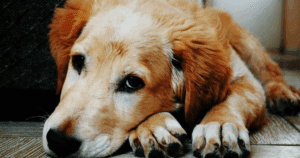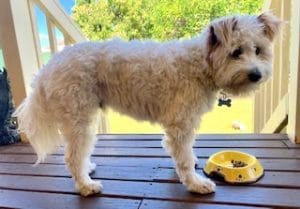

When it comes to some of the top dog behaviour problems trainers are called in to help with, Erin Williams from Beyond Dog Training in Sydney and speaker at this year’s Sydney The Pet Show shares her top three, plus some key tips to help.
When it comes to top dog behaviour problems, when a dog remains in a state of over-arousal, things can go bad very quickly because dogs are in the reactive part of their brain where there is less contact with their regulatory system where impulse control comes from. We want to MANAGE their arousal levels so that they don’t make bad decisions.
WHY it’s a problem
Arousal levels are often misunderstood by handlers who sometimes mistakenly see the behaviours as harmless or even amusing. However, it can lead the dog to make bad decisions & can create misunderstandings which result in reactivity &/or aggression. We want to intervene BEFORE it gets to this point of being out of control.
HOW it occurs
TIPS to help
When it comes to top dog behaviour problems, leash reactivity is probably the biggest concern for dog owners when walking their dogs. It happens when another dog appears and is either on, or off lead, or we are passing barking dogs in house yards.
These are called TRIGGERS. The dog being walked starts to “play-up.” What is really going on is that the dog is not coping with the stressful situation and is trying to get away or they feel like they have no choice but to be defensive by being offensive first.
WHY it’s a problem
HOW it occurs
TIPS to help
Dog trainers have seen a marked increase in anxiety with the proliferation of backyard breeding and a lack of early SOCIALISATION. Good breeders won’t breed from dogs with any level of anxiety because it is passed on genetically to the litter.
Some owners mistake their dog’s anxious behaviours for being naughty and mistakenly punish their dog thinking it will change things.
A qualified Dog Trainer can help to identify it, educate, and help owners to work through it. It may require the assistance of a Veterinary Behaviourist so that the dog has a greater chance of living a better life with the anxiety under some control.
WHY it’s a problem
HOW it occurs
TIPS to help
To learn more about the importance of treating dog behaviour problems early, to help combat some of these top dog behaviour problems, click here.
Hear from Erin at The Pet Show Sydney, being held November 18 – 19 2023, 10am – 4pm at the Sydney Show grounds. To purchase your tickets click here.
The Pet Show will also be held in other states in 2024 including:
About the Author: Erin Williams has completed a Certificate IV in Companion Animal Services with Australia’s highly respected Delta Institute as well as a Certificate IV in Small Business Management. She considers that Positive Reward Based Dog Training will lay the foundations for a ‘new approach’ in the future of pet care worldwide and runs her dog training services Beyond Dog Training in the Hunter Valley, NSW.

Treating Noise Phobia in dogs and cats



Choosing the right puppy school



Get your paws on Lara Shannon’s best selling books ‘Eat, Play, Love (your dog) and World of Dogs.
Available in Australia, USA, UK and Canada.